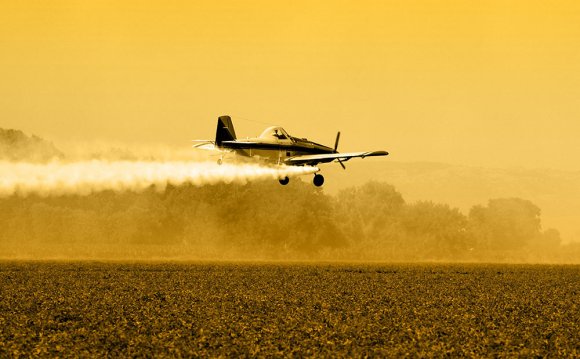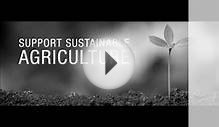
Over the last two decades, small- and medium-scale farms raising animals for food have given way to factory farms that confine thousands of cows, hogs and chickens in tightly packed facilities.
Factory farms produce millions of gallons of manure that can spill into waterways from leaking storage lagoons or fields where manure is over-applied to soil. Manure generates hazardous air pollutants and contains contaminants that can endanger human health. Neighbors of factory farms, as well as the workers in them, often suffer intensely from overwhelming odors and related headaches, nausea and other long-term health effects.
What Is a Factory Farm?
Beef cattle: 500 head on feed (feedlot)
Dairy: 500 cows
Hogs: 1, 000 head
Broiler chickens: 500, 000 sold annually
Egg-laying chickens: 100, 000
Most farmers are not benefiting from this system of production because they are not getting paid much for the livestock that they raise. Even people thousands of miles away from these facilities are not immune to their impacts. Consumers eating the dairy, egg and meat products from factory farms can be exposed to foodborne bacteria such as E. coli and Salmonella, as well as to the public health consequences of unchecked use of antibiotics.
And yet, the number and concentration of factory farms in the United States continues to increase.
Too Much Manure
The animals on factory farms produce tremendous amounts of manure. Food & Water Watch estimates that the livestock and poultry on the largest factory farms in 2012 produced 369 million tons of manure — almost 13 times more than the 312 million people in the United States. This 13.8 billion cubic feet of manure is enough to fill the Dallas Cowboys stadium 133 times. The household waste produced in most U.S. communities is treated in municipal sewer systems. But factory farm manure is stored in lagoons and ultimately applied, untreated, to farm fields as fertilizer.
Small, diversified farms that raise animals as well as other crops have always used manure as fertilizer without polluting water. The difference with factory farms is scale. They produce so much waste in one place that it must be applied to land in quantities that exceed the soil’s ability to incorporate it. The vast quantities of manure can — and do — make their way into the local environment where they pollute the air and water.
Food Safety Risks
Factory farms can create other health hazards because they are over-crowded and stressful to animals, making it easy for disease to spread. When thousands of beef cattle are packed into feedlots full of manure, bacteria can get on their hides and then into the slaughterhouses. Contamination on even one animal can contaminate thousands of pounds of meat inside a slaughterhouse. In 2010, the crowded, unsanitary conditions at two Iowa egg companies caused a recall of more than half a billion potentially Salmonella-tainted eggs.
Abusing Antibiotics
Many factory farms routinely give low levels of antibiotics to animals, even if they aren’t sick. By creating a perfect breeding ground for antibiotic-resistant bacteria, this nontherapeutic use of antibiotics on factory farms can reduce the effectiveness of antibiotics for human patients.
Animal Welfare Problems
Factory farms also are detrimental to the animals themselves. Most factory-farmed hogs and chickens have no access to the outdoors and never see daylight. Beef cattle and dairy cows spend time outside, but they are confined to feedlots with no access to pasture or grass, which is what they are built to eat. The lack of outdoor access, inability to express natural behaviors, health problems and stress caused by production practices, and breeding designed to maximize weight gain or egg and milk production take a toll on animal welfare.
Replacing Independent Farmers
Nor have most farmers benefited from the shift to factory farming. The number of dairy, hog and beef cattle producers in the United States has declined sharply over the last 20 years as the meatpacking, processing and dairy industries have driven farmers to increase in scale. The tiny handful of companies that dominates each livestock sector exerts tremendous control over the prices that farmers receive, and these companies micromanage the day-to-day operations of many farms. The real price that farmers receive for livestock has trended steadily downward for the last two decades. Most farmers barely break even. In 2012, more than half of farmers lost money on their farming operations.
How Did We Get Here?
The rise of factory farming is no accident. It is the result of public policy designed to benefit big meatpackers and food processors that dominate the critical steps between farm and consumer. Factory farming was facilitated by three policy changes pushed by the largest agribusinesses: A series of farm bills artificially lowered the cost of the corn and soy that go into animal feed; the Environmental Protection Agency (EPA) ignored factory farm pollution; and the Department of Justice allowed the largest meatpackers to merge into a virtual monopoly.
What You Can Do About It
Policies made at all levels of government contributed to the rise of factory farms, so all levels of government will need to make changes to rein in this industry.
- Congress should restore sensible farm programs that do not prioritize the production of artificially cheap livestock feed over fair prices to crop farmers.
- The EPA should enforce appropriate environmental rules to prevent factory farm pollution.
- The Food and Drug Administration should reverse the approval of nontherapeutic antibiotic and other livestock drugs that facilitate factory farming at the expense of public health.
- The U.S. Department of Agriculture must enforce regulations that allow independent livestock producers fair access to markets.
- State environmental authorities must step up their coordination and enforcement of regulations on factory farms.
USDA National Agricultural Statistics Service. 2012 Census of Agriculture. United States Summary and State Data at Tables 11, 12 and 20; Food & Water Watch calculation comparing human and livestock waste production based on EPA (2004) at 9.
USDA Natural Resources Conservation Service. “Agricultural Waste Management Field Handbook.” Chapter 4, Agricultural Waste Characteristics. March 2008 at 4-12 to 4-20; Dallas Cowboys. [Press release]. “Dallas Cowboys Stadium Design Statement.” December 12, 2006.
USDA National Agricultural Statistics Service. 2012 Census of Agriculture. United States at Table 5 at 14.
RELATED VIDEO











